Travel Guide to Jerusalem
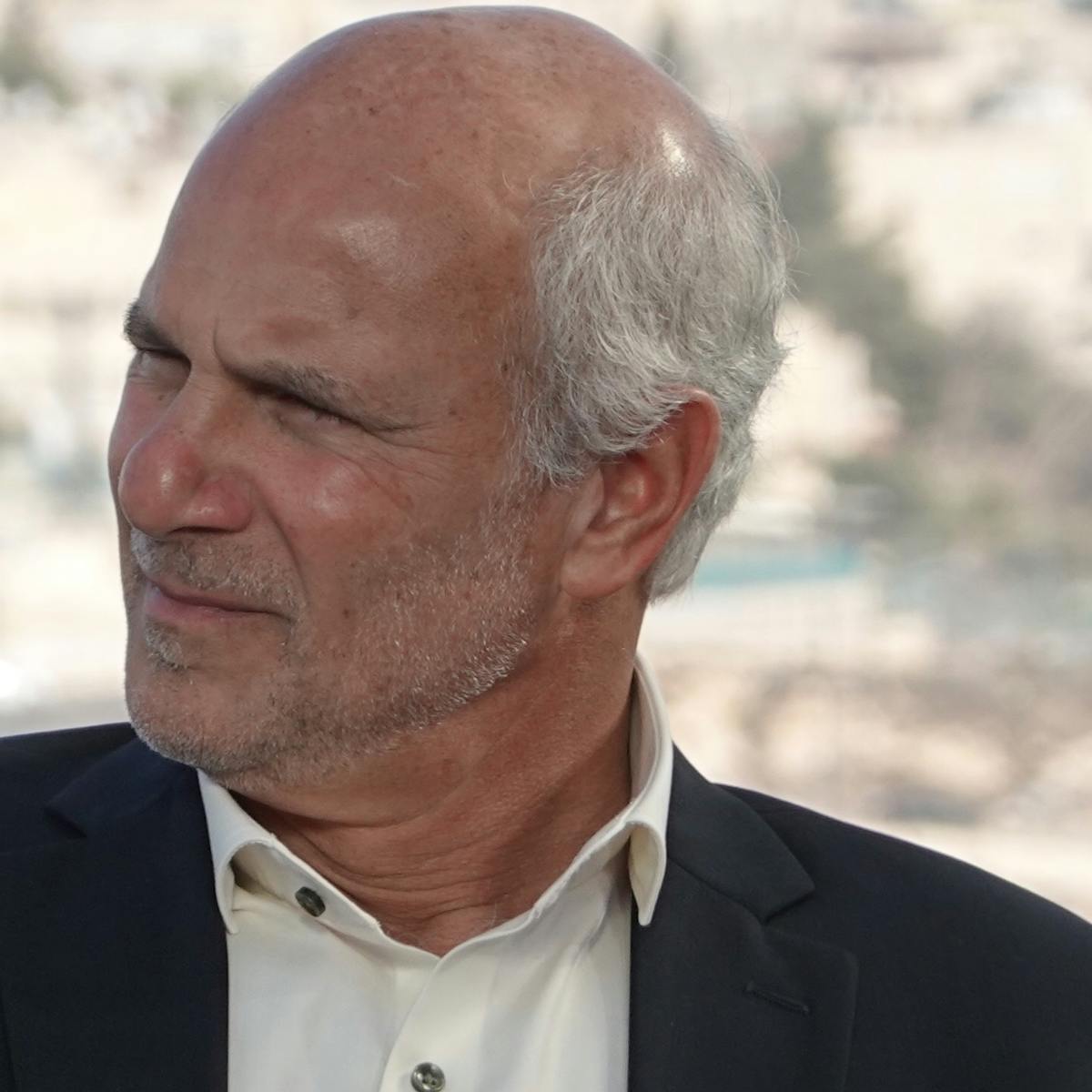
Considered a holy city by the Jewish, Muslim, and Christian faiths alike, Jerusalem is loved and revered by one-third of the planet’s population. There is no other place like it on the face of the earth!
Many claim that Jerusalem is and has been the spiritual, religious and ideological epicenter of world events for thousands of years. Since Father Abraham met the mysterious Priest-King Melchizedek in the valley beneath its ancient walls (as we are told in Genesis chapter 14).
The city has been mentioned hundreds of times in the biblical texts from Genesis all the way to the book of Revelation, and has remained an international focus for thousands of years.
Most great cities in our world became famous either because of their strategic location or great natural resources. We see capital cities located by seaports, great rivers, deep mines, major roads, etc. Yet Jerusalem has none of those natural features of attraction.
Actually, the city is located on top of a moderate mountain range, on the edge of a wilderness, far from the sea, and lacking any valuable natural resources. In fact, Jerusalem should have been just another ordinary, Middle Eastern city.
And yet, there is no other place like Jerusalem on the face of the earth. Spiritually, politically and ideologically, Jerusalem is unique and special in every way. Why? What makes it that special?
The only possible explanation is the one which the Bible, as well as the history of the Middle East, reveals time and again, pointing to Jerusalem as the one place on earth where the Creator God has chosen to place His name (Deuteronomy 12:12) and anchor His reputation.
It is this unique and rare spiritual phenomenon that brings Jerusalem, over and over again, into the vortex of world events. Now it is your opportunity to discover her magic.
Following her religious and historic significance spanning thousands of years of epic events and monumental happenings, Jerusalem again appeared on the global center stage as the Capital of the modern-day State of Israel after it gained international recognition with U.N. resolution # 181 in November of 1947.
Having resurfaced after many centuries of obscurity, the city embodies the unfolding histories of nations and empires, connecting ancient antiquity to current geo-political events, all the while clothed in a charming, mystical, and modern personality.
Exploring Jerusalem’s story, architecture and beauty is an experience that will stay with you for the rest of your life, whether you are doing it alone or as part of a group. Either way, with so much to see, to experience, and to learn, securing the services of a Sar-El Tours’ licensed and experienced guide will enrich your trip and be well worth the investment.
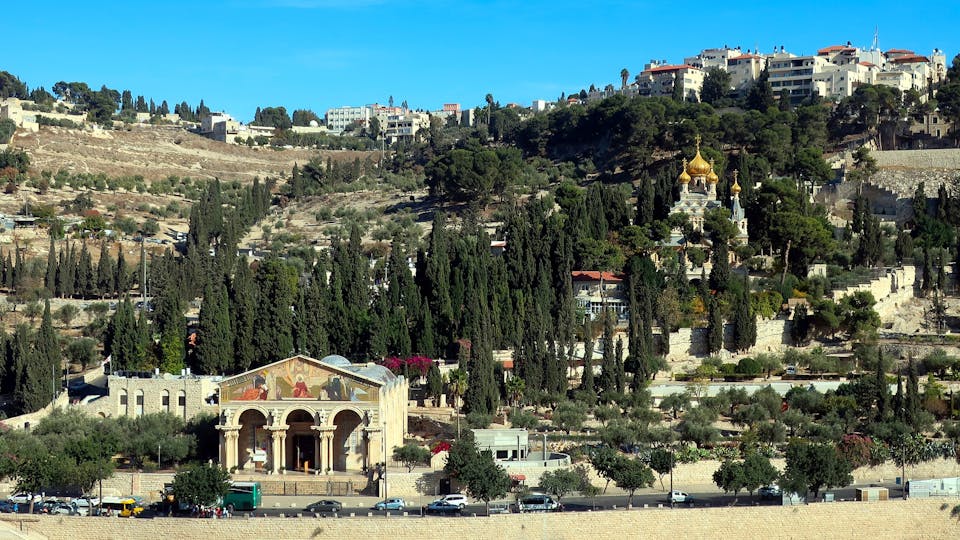
History
The entire area of Jerusalem is historically and biblically known as “the Land of Moriah.” Bible readers will remember how God tested Father Abraham when He told him, “Take now your son, your only son Isaac, whom you love, and go to the land of Moriah, and offer him there as a burnt offering on one of the mountains of which I shall tell you.”
The same word, Moriah, appears again in 2-Chronicles 3:1, telling us that "… Solomon began to build the temple of the LORD in Jerusalem on Mount Moriah, where the LORD had appeared to his father David..."
Interestingly, the term “Moriah” in the Hebrew language is a construct of two words. MORI = “my teacher,” and YA = the short version of the name “Yahweh.” When put together, the term Moriah, in the Hebrew language, means “God is my teacher.”
According to this view, the entire region is named as a place where “God is my teacher,” and many believe that God has much that He wants to teach all of us through Jerusalem when we visit, explore, and discover all that the city has to show us.
Researchers trace the first human settlements in Jerusalem to the Early Bronze Age around 3500 B.C. when the region was inhabited mostly by Canaanite tribes organized in small tribal kingdoms.
The Israelites took possession of the land of Canaan at roughly 1500 B.C, but it was only about 500 years later that the famous King David conquered Jerusalem from a Jebusite tribe and made it his Capital City for the kingdom of Israel. It was David’s son, Solomon, who built the first Jewish Temple in Jerusalem about 40 years later.
Following hundreds of years of Israelite rule, the Babylonian Empire invaded the region in 586 B.C., destroyed the Temple, and sent many Jews into exile. 70 years later, the Persian King Cyrus permitted the Jewish exiles to return to Jerusalem and rebuild their Temple. Jerusalem entered into its Second Temple Period, but trouble was still on the horizon as other regional and international powers coveted the city and the land.
Following the Assyrian invasion, Alexander the Great also led his armies into the Middle East during a sweeping military campaign and conquered Jerusalem in 332 B.C, leading to centuries of foreign rule by many regional powers and great empires, including the Romans, Byzantines, Persians, Arabs, Fatimids, Seljuk Turks, Crusaders, Egyptians, Mamelukes and Islamists, all the way to the British Empire which conquered the region during WW I.
It seemed that every empire that rose upon this earth was compelled to march to Jerusalem. Yet, as Providence would have it, the city has returned to the hands of the Sons of Israel and is under the sovereignty of the State of Israel today.
Christian traditions in Jerusalem are naturally focused upon the story of Jesus and His close ties to the city. It was in 37 B.C. that King Herod the Great restructured the Second Temple complex that the returning Babylonian exiles built, erected retaining walls around it to expand its surface, and extended it significantly to accommodate the growing numbers of pilgrims and the commercial activities associated with them.
One of those retaining walls is recognized today as “The Western Wall.” Jesus’ ministry and activities brought Him often into Jerusalem, and many of the Gospel stories are anchored in and around Jerusalem, including His Palm Sunday entrance, Passion Week, crucifixion, burial, resurrection, and ascension to heaven.
Following the Jewish revolts against Rome’s pagan rule, the Roman military devastated the countryside, destroyed the Temple in 70 A.D, and eventually exiled most surviving Jews. Jerusalem was rebuilt during the 2nd Century A.D. by Emperor Hedrian as a Roman pagan city by the name of Ellia Capitoline, and the land came under extended Roman and Byzantine rule.
It was during those centuries that Christian pilgrimage to the Holy Land developed, and many of the “holy sites” that you can visit today were identified and marked with chapels and churches, some of which stand to this very day.
Muslim forces drove the Byzantines away when they invaded the region during the 7th Century A.D., arriving from the east, but Christian fervor which rose around the turn of the millennium brought about the Crusades from Europe which attempted to liberate Jerusalem from Islamic rule.
They did, and from about 1099 to 1187 A.D., the crusaders actually occupied and ruled Jerusalem, not without great turmoil, until they were defeated and driven away by renewed Muslim Arab military campaigns led by the famous Salah-A-Din.
Various Arab and Muslim rulers controlled Jerusalem and the region until the Ottoman Empire rose to power over the entire Middle East from 1516 to 1917 A.D. These 400 years of Turkish Muslim rule came to an end during WWI as the British Imperial Expeditionary Forces defeated the Turks, liberated Jerusalem, and launched the period known as the “British Mandate”. Which lasted until Israel’s declaration of independence in 1948.
During the aftermath of the 1967 Six-Day War between Israel and her Arab neighbors, Jerusalem, which was previously divided between Jordan and Israel, was now reunited under Israeli sovereignty and remains the Capital City of Israel to date. When making your travel plans, be sure to consult with your Sar-El Tours professional operator to maximize and optimize your time in the Holy City.
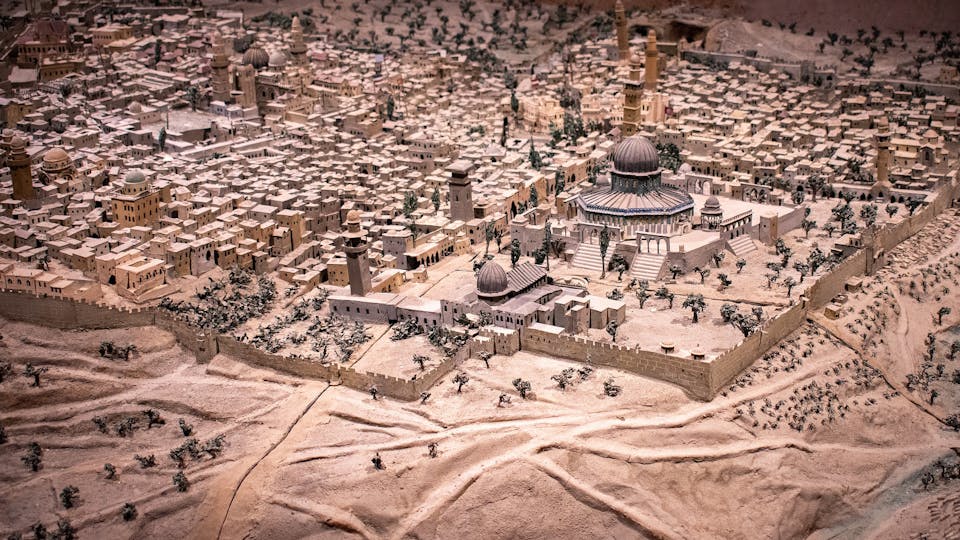
Geography
Psalm 125:1-2 says that “…As the mountains surround Jerusalem, so the LORD surrounds His people from this time forth and forevermore.” Composed as one of Israel’s “songs of ascents,” this Psalm was sung by Levites, Priests and pilgrims ascending the massive stone steps leading up to God’s Temple on top of Temple Mount to worship and bring their offering.
You can actually climb those exact 2000 years old steps today, having been meticulously excavated and repaired by Israeli archeologists, just a few feet away from the famous Western Wall in one of Jerusalem’s most remarkable archeological sites.
However, Psalm 125 is also geographically accurate as Jerusalem is located in the general center of a range of low mountains running north to south throughout central Israel between the Mediterranean and the Jordan Valley.
Topographically, Jerusalem is not built ON a mountain. Rather, it is built IN the mountains, and the city is, in fact, surrounded by seven mountain peaks higher than itself. That’s right! This ancient psalm composed by a passionate and spiritually minded worship leader thousands of years ago, actually offers a very accurate geographical description of the region.
Seven mountain peaks surround the ancient Old City of Jerusalem which was then much smaller than the modern Jerusalem you will visit today. These peaks are
- Mount Scopus,
- Mount of Olives,
- Mount of Corruption,
- Mount Ophel,
- The original Mount Zion/Moriah (today’s Temple Mt.),
- The more recent Mount Zion (where the traditional Upper Room is located), and
- The peak upon which the Roman Antonia Fortress was built just north of the Temple complex.
These seven peaks surround the biblical city of Jerusalem from all sides in the same way that, as people of faith see in Psalm 125, the Lord is surrounding His people. Take a look at any topographical map of the Jerusalem area; observe the mountains surrounding the city, and take faith in the God who promised to be as real to you as these mountains are to Jerusalem.
Occupying the land bridge connecting the continents of Europe, Asia, and Africa, old world maps depict Jerusalem as literally at the “Center of the World” with the three great continents stretching out from it like petals of a beautiful flower. It is this strategic centrality that has made Jerusalem the epicenter of great and epic military campaigns that attracted the Empires of the world and shaped our history for thousands of years.
Situated on top of the mountain ridge of Judea and Samaria, Jerusalem is at an average elevation of about 2,300 feet above sea level. The terrain is beautiful as it combines rugged vistas with green mountain slopes that drop sharply into the Jordan Valley as you travel east.
Top Locations to Visit
As Israel’s premier travel agency serving international markets for nearly 30 years, let Sar-El’s experience and expertise work for you. Top among Jerusalem’s attractions is no doubt the Old City of Jerusalem. The famous skyline of the Old City Walls, the tall towers of David’s Citadel, the giant Herodian stones of the Western Wall, and the Dome of the Rock on top of Temple Mount are recognized images worldwide.
Dotted with synagogues, churches, and mosques, the city has an attractive and alluring appeal to every visitor. In a short stroll, you can move from the huge 2,000 year-old Herodian stones of the Western Wall on Temple Mount, to the Garden of Gethsemane commemorating the agony of Jesus on the slopes of the Mount of Olives.
The Old City of Jerusalem is rich with historic and religious sites that make this city so special. Occupying barely one square kilometer, the walled City holds the keys to the heart of Judaism, Islam, and Christianity. There are four quarters in the Old City of Jerusalem, Jewish, Muslim, Christian, and Armenian.
Each is unique from the others, yet together they form a magical union of cultures, traditions, architectures, and faiths. Walking through the alleyways and open markets of the Old City is an easy and comfortable stroll; one which every visitor enjoys.
The Ramparts Walk which stretches on top of the great wall surrounding the Old City of Jerusalem is a must for every visitor as it offers epic vistas that tell stories thousands of years old. From the top of these ramparts, built more than 400 years ago by “Suleiman the Magnificent” who then ruled the Ottoman Empire, visitors can scan thousands of years of history in the making.
The Church of the Holy Sepulcher, Golgotha, the Dome of the Rock, Mount Zion, the modern City of Jerusalem, the City of David, Gethsemane, as well as the Muslim, Jewish, Armenian, and Christian quarters are but some of the magnificent array of sites to be seen from the walls. Watching a historic panorama unfolding before you while comfortably strolling upon these massive ramparts, visitors can then descend back into the Old City for a delicious snack.
The Temple Mount is the heart of the City, the heart of Israel, and some say, the heart of the world. The site, according to the Bible, was originally bought and developed by King David about a thousand years before Christ. Having become the location of both Jewish Temples, and containing key religious sites such as the Western Wall, the Dome of the Rock, and the al-Aqsa Mosque, this 35-acre area holds the focused attention of all three major monotheistic religions.
The Western Wall is located by Temple Mount in the Jewish Quarter, and it is the only visible retaining wall that King Herod the Great erected roughly 2,000 years ago in order to artificially expand and enlarge the original Temple complex. For Jewish pilgrims, this is the holiest site on earth, the closest they can get to the ancient Temple site. For Christians, the Temple Mount is also valuable as it marks the place Jesus often visited and taught the disciples as recorded in the New Testament.
The famous Dome of the Rock with its golden dome was actually erected in 691 A.D. as part of an Islamic commercial/political/religious complex built on the site of the destroyed Jewish Temples. The Dome was built by Caliph Abd al-Malik at the very site where Muslims believe Muhammad ascended to heaven.
Christian crusaders turned the site into a church for a short time, but the Muslims recaptured it in 1187 A.D. and re-designated it as an Islamic shrine. Next to its golden dome stands a silver-domed mosque called al-Aqsa, another holy site for Muslims.
A few minutes walk from Temple Mount you will find The Church of the Holy Sepulcher, commemorating the death, burial, and resurrection of Jesus. The Church complex, located at the end of the traditional Via Dolorosa, the Road of Suffering leading from Jesus’ place of judgment to His cross and His grave, is shared by six different Christian orthodox denominations and is one of the most visited sites on earth.
The original Church building was built in 335 A.D. following the historic visit of Queen Helena, the mother of Emperor Constantine who introduced Christianity as the official religion of the Roman Empire. Many thousands of Christian pilgrims from around the world visit the site each year, especially from Orthodox denominations, and many regard it as the holiest Christian site in the world.
Shopping in the narrow streets of the Old City, which are packed full of small shops, stalls, and street vendors, you will be surrounded by an intoxicating flood of colorful religious artifacts, fragrant ethnic foods, and Middle Eastern garments, jewelry, and musical instruments for sale. When you shop, don’t forget to bargain… you are expected to.
West Jerusalem is the modern part of the City and is home to Israel’s government buildings, the Parliament, the Supreme Court, and some of the world’s most impressive museums. The massive 15-foot-tall bronze candelabra in front of Israel’s Parliament building is a popular photo spot for thousands of visitors.
They come to honor Israel's past, admire its present, and pray for its future. And deep below the ground, at the impressive complex of the Israel Museum, you will find the Dead Sea Scrolls displayed in their “bunker,” known as “The Shrine of The Book.”
These scrolls, discovered in 1947 in deep caves high above the western shores of the Dead Sea, brought to light some of the oldest and most comprehensive biblical texts ever found, including the complete writing of the prophet Isaiah.
Discovered by a shepherd boy looking for a stray goat, these ancient parchments revolutionized the world of biblical archeology and are on display today for every visitor desiring to experience and enjoy the ancient world upon whose shoulders we stand today. A must-see!
In recent years, Jerusalem has become a distinguished cultural center, and the wave of exquisite cuisines which has swept Israel is also evident here. Some of our favorite restaurants in Jerusalem can be found in the Old City, the New City, and the famous German Colony.
By municipal law, all buildings in the city must be fronted with the beautiful white/creamy stone dug from local quarries that the region is famous for, giving the city its magical appearance.
In the heart of Jerusalem, you will find the famous pedestrian Ben-Yehuda Street. This beautiful broad walking street (no motor vehicles allowed) is paved with stunning Jerusalem stones, and features a great selection of restaurants, cafes, and fun shopping. Strolling down the street, you wouldn’t be able to miss the remarkable street musicians that bring rich sounds and tunes to the enchanted atmosphere.
Machane Yehuda open market is a must experience for every visitor. Here you will be immersed in the sounds, sites and fragrances of Jerusalem’s largest street market with over 250 vendors offering their products. Being one of the most vibrant neighborhoods of the city, you can shop, dine, or simply enjoy the delicious tastings and remarkable nightlife.
Jerusalem is also known for its great selection of museums, with Yad-Vashem, the Memorial for the Holocaust, possibly being the most famous one. Situated on the beautiful Mount Herzl, this large and impressive complex is a memorial commemorating the millions who perished during the Nazi Holocaust.
The museum tells its story through art, architecture, historical items, video and audio testimonies, and multimedia displays. Next door, the world renowned Israel Museum houses remarkable collections of artistic, archaeological, historical, and cultural displays from past periods.
One of the most amazing displays in Jerusalem is the world-famous Dead Sea Scrolls featured at the specially designed Shrine of the Book at the Israel Museum. Jerusalem also has a beautiful Biblical Zoo, botanical gardens, amazing theatre and dance companies, and much more to enjoy. Be sure to consult with your Sar-El Tours operator to get the most from your visit.
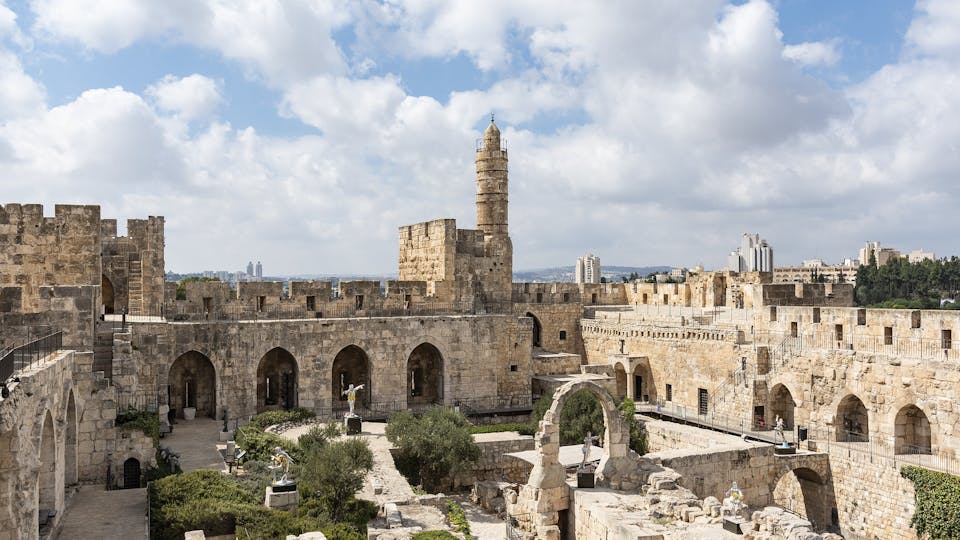
Culture & Language
The demographic makeup of Jerusalem is as diverse, colorful, and stimulating as the rest of Israel. About 1/3 of the city’s population is Orthodox Jewish, 1/3 Arab Israeli Muslims, and 1/3 secular Jewish Israelis, with a smattering of Christian and other faith communities. Being a magnet for residents and immigrants from all over the world, Jerusalem is home to diverse cultural expressions which co-exist side by side in a fascinating collage of colors, tastes, and smells.
As Jerusalem is home to the three great monotheistic religions which have co-existed side by side for many centuries, the city is also a haven to minority sects and religions, offering the amenities of a western civilization and economic opportunities to all its residents.
Hebrew is the official language spoken in Jerusalem and used in the educational system, government, business, media, art, and daily social interactions. However, with a high level of education and constant exposure and interaction with the West, most folks are also functional in English. And, since one third of Jerusalem’s residents are Arab, Arabic is also spoken freely.
Transportation
Jerusalem transportation infrastructure is a combination of the ancient and the modern, and it is continuously expanding. The municipality is constantly adding new light rail and bus lines, train tracks, tunnels, and highways to connect the various neighborhoods, with clear signage in Hebrew, English, and Arabic.
Cars drive on the right side of the road in Israel, and traffic is well-managed in most places. Of course, you will find traffic jams during rush hour, which is why wise planning of your itinerary with a Sar-El Tours’ travel professional will be helpful.
Many visitors choose to join a pre-organized tour and enjoy the ease, comfort, and peace-of-mind that come with having all services pre-booked and managed by Sar-El Tours. Those groups enjoy the services of qualified and licensed guides and drivers as they move around the city in luxury air-conditioned and Wi-Fi-equipped buses.
Many, however, preferring to enjoy a more independent experience, rent a car or a van at the airport and venture out on their own. For low-budget travelers, public transportation is safe, efficient, and affordable. An easy-to-use App and online services make public transportation easy and enjoyable as travel becomes part of your overall experience.
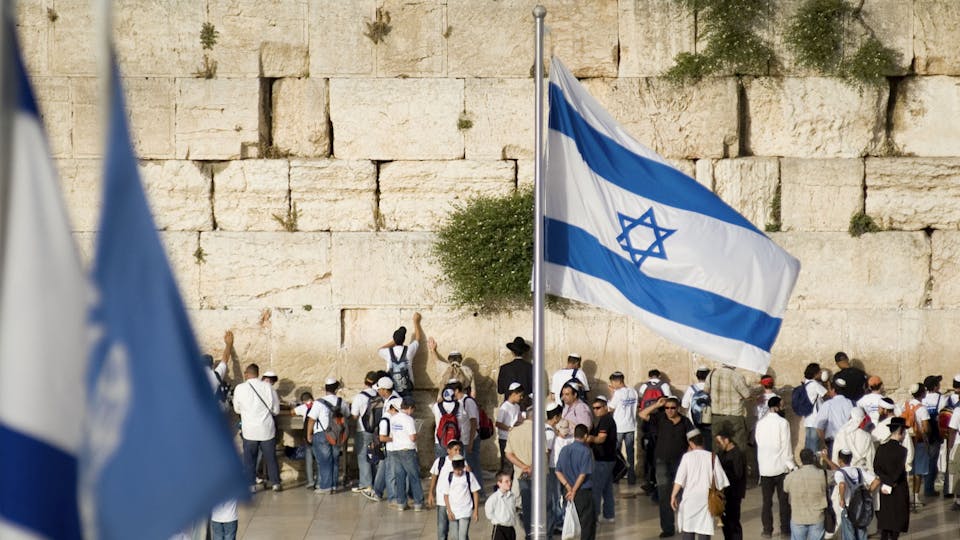
Accommodations
Jerusalem has many hotels, hostels, holiday rentals, and Airbnb’s for every budget. Some of Israel’s most luxurious hotels are located in Jerusalem with incredible views of the Old City Walls, and online access is easy and fast for individual searches. Yet, employing the services of Sar-El Tours will ensure that you will fully benefit from the experienced advice and savings due to our buying power.
With continual new hotel construction, Jerusalem now offers thousands of quality hotel rooms in the 3, 4 & 5 star categories, plus a number of small boutique hotels. For budget-oriented travelers, cost-effective hotels and hostel options can easily be found, offering you comfortable access to the best sites and attractions.
Jerusalem’s visitors and residents enjoy many special annual events, including:
- The “Winter Christmas Festival” (held in late December) includes days of festivities, special Christmas events, culinary tours, workshops, holiday dinners, and open markets among the Christian communities of Jerusalem.
- The “Jerusalem Season of Culture” runs each summer as the city hosts fascinating artistic experiences including dance, music, poetry, and art performances from world-renowned acts.
- “Jerusalem Light Festival” (during June) includes dazzling light installations and light shows throughout the Old City and across the Old City Walls.
- Different special events and festivals take place in Jerusalem continuously, and visitors are advised to consult with our Sar-El agents to confirm exact dates, locations, and availability.
Weather
Jerusalem’s weather is largely influenced and created by the warm temperatures of the Mediterranean Sea to the west and the wilderness to the east, and is, therefore, relatively comfortable year round. Add to that the benefit of cooler and dryer mountain air, and you find that Jerusalem’s weather is one of the most comfortable ones in all of Israel.
With the summer months averaging 20s & 30s Celsius (80s and 90s Fahrenheit), and winter temperatures rarely reaching the single Celsius digits (40 and 50s Fahrenheit), Jerusalem is a popular destination 12 months a year.
The rainy season, which lasts between November and March, can be wet as rain storms pass through the area, but the sun always breaks through, offering a much-appreciated relief to the many tourists who arrive to Jerusalem over the Holiday season, and during the less busy months of January/February.
When to visit Jerusalem?
With Jerusalem’s moderate year around weather, there is hardly a bad time to visit. Even during the coldest and rainy months of December – February, or the warmest months of July – September, thousands of visitors enjoy the city. Prices are most comfortable during the January – February less busy travel season.
Food in Jerusalem
The Israeli cuisine as a whole and Jerusalem’s cuisine in particular incorporate a wide variety of dishes from both the local Middle Eastern region and those imported from around the world. Consequently, a fascinating Israeli "fusion cuisine" has developed over the years.
It blends Arab culinary styles with Jewish international cooking, including Sephardic and Ashkenazi traditions.The rich availability of fresh produce such as fruits, vegetables, dairy and fish, add to the abundance and taste of the various dishes.
With culinary traditions spanning nearly 3,000 years, these customs have been shaped and influenced by cuisines from Asia, Africa, Europe, the Orient and the Middle East. Add to that various religious and ethnic influences, and you discover a fascinating and delicious culinary melting pot.
Ancient biblical foods also play an important role in modern Israeli cuisine, and the seven species of the Promised Land which include olives, figs, dates, pomegranates, wheat, barley and grapes are frequently found on every table.
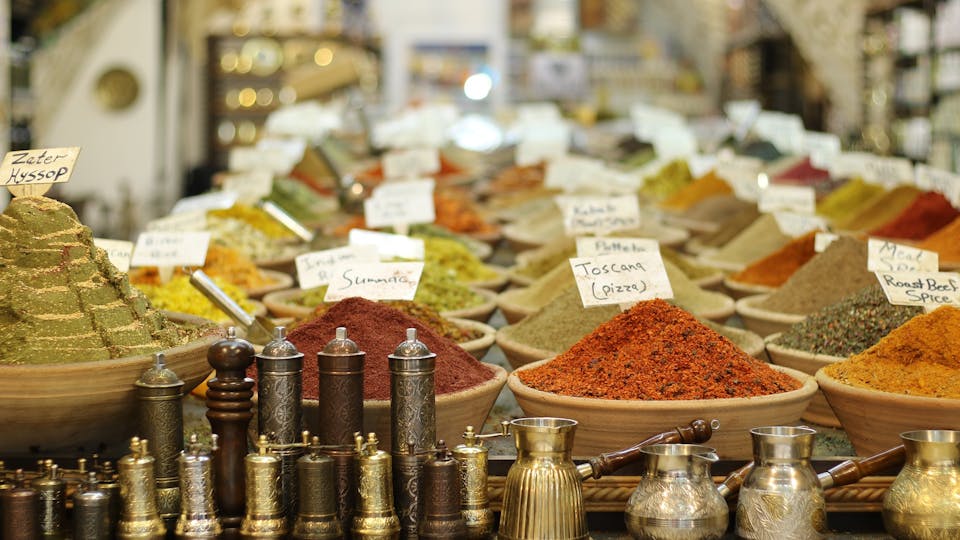
Luxury Travel Tips
Discovering Jerusalem in style is the way to go if you want to combine the ancient magic of the land of the Bible with modern amenities and first-class services. Sar-El Tours professional operators will be able to guide you to the following features:
VIP arrival and departure assistance at the Ben Gurion International Airport will simplify and expedite your passport control, customs, and baggage claim. A friendly representative will meet you at the Jet-way and lead you through the fast-track passport control, baggage claim, and customs, straight to the private parking lot where your driver will be waiting.
Luxury 5 and 6 star hotels can be found in downtown Jerusalem, ready to pamper you with attentive services, high thread-count sheets, world-class spas, rooftop restaurants with award-winning chefs, and breath taking views of the Old City Walls and Temple Mount.
Private executive tours & travel packages will ensure that you get to where you want to be fast and comfortably, with the advantage of having a local expert by your side to walk you through the local dynamics and bring you into the real story of each location you visit.
Enjoy a leisurely breakfast, set out at the time of your preference, return early enough to enjoy the spa before supper, and travel around the area in a luxury vehicle with a private licensed guide, unrushed and at ease. These are but a few of the benefits of securing Sar-El Tours’ private or executive travel packages.
Luxury shopping can also be found in Jerusalem, both at the prestigious Malcha Mall or at the various designer boutiques and concept stores dotting the city. From trendy neighborhoods with pedestrian streets, to Jerusalem’s famous open markets, the city is rich with luxury shopping opportunities.
With an abundance of fresh locally grown produce, Middle Eastern herbs, seafood, and fine meats, Jerusalem offers a rich variety of fine dining opportunities combining ancient cooking traditions with innovative and exquisite culinary expertize. Be sure to consult with your Sar-El Tours’ travel professional to learn what your options are, and to make your reservations when necessary.
Useful phrases (Hebrew)
SHALOM – hello, goodbye.
Boker Tov – good morning.
Erev Tov – good evening.
Kama Ze Ole – How much does it cost?
Ma Sh’lom’cha – How are you?
Lehitra’ot – See you later.
Toda Raba – thank you very much.
Useful Information
Currency
The Israeli New Shekel is the official currency of Israel. It is considered a very stable and strong currency with an exchange rate of roughly 1 US dollar for 3.25 Israeli New Shekels at this writing.
All major credit cards are accepted by most merchants and service providers, but cash is advised when shopping in the Bazars or open street markets. ATM machines are available on every street corner, and licensed money changers are positioned throughout most large cities and tourist areas.
Power
Electrical service in Israel uses three associated plug types, C, H and M. Plug type C is the plug which has two round pins, plug type H has three pins in a triangular shape and type M has three round pins. Israel operates on a 230V supply voltage and 50Hz.
Phone and Internet
Israel is technologically advanced with extensive internet coverage, and there is good mobile phone reception in all the cities and most regions. Most travelers opt for an international roaming plan through their own local providers, while some prefer to buy a local sim card from a phone store with pay-as-you-go vouchers. Phones can also be rented upon landing at the Ben-Gurion International airport.
Time Zone
Time zone in Jerusalem, Israel, is (GMT+3).
Tipping
The average rate for tipping in Israeli restaurants and cafes is between 10-15%, depending on the quality of the service. Hotel bell boys will appreciate a couple of New Israeli Shekels per suitcase.
Tour Guides and drivers, if your group uses their services, are tipped at an average rate of 8 US Dollars per person per day for the Guide, and 5 US Dollars per person per day for the driver.
Your Sar-El Tours operators are standing by to help you plan the trip of a lifetime.